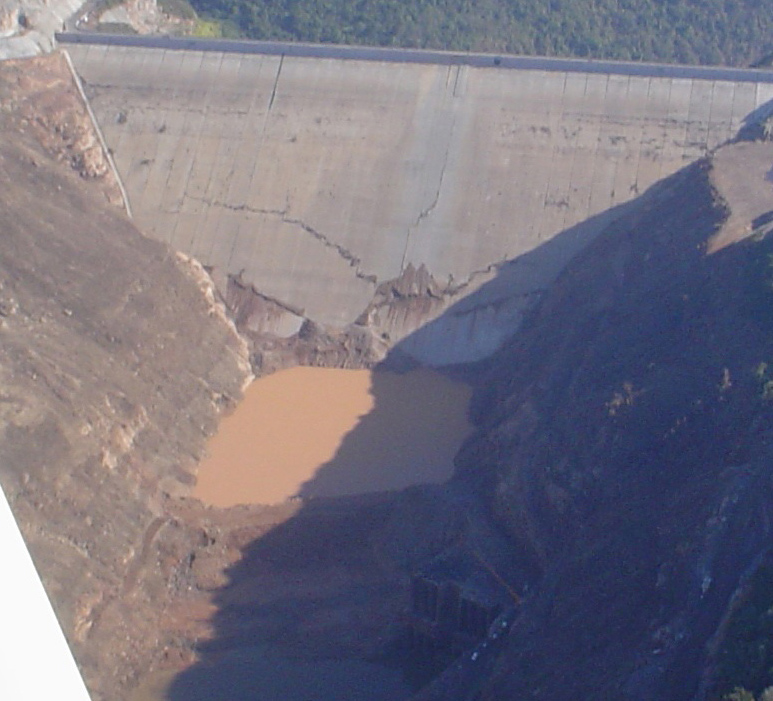The surface of Hálslón, the reservoir by Kárahnjúkar dams in Iceland’s eastern highlands, is constantly rising, swallowing nests and eggs laid by geese. The area is the nesting ground for greylag geese amongst numerous other species of rare and endangered birds. At least 500 greylag nests are thought to be at risk.
According to newspaper Morgunbladid, the birds have not yet realized the changes of their summer habitat, which happened when the glacial river Jökulsá á Dal was blocked last autumn to create Kárahnjúkar dam and Hálslón reservoir. This is to provide energy for an ALCOA owned aluminium smelter in nearby fjord, Reydarfjördur.
A protected area, Kringilsárrani, is also being partly drowned and devastated in full by the project. It is the calving ground of a third of Iceland’s reindeer population, which will be displaced.
The Kárahnjúkar area is the most densely vegetated area north of Vatnajökull, the world’s largest non-arctic glacier. Sixty major waterfalls are being destroyed and innumerable unique geological formations drowned, along with the just recently discovered ancient ruins of Reykjasel, about the most important archaeological find in Icelandic history.
The Kárhnjúkar project entails blocking the silt emissions of two massive glacial rivers, Jökulsá á Dal and Jökulsá í Fljótsdal. This will result in the receding of the combined delta of the two rivers. This will destroy a unique nature habitat in the delta and cause the loss of one of Iceland’s major seal colonies.
The Kárahnjúkar dams are situated on a cluster of active geological fissures. The government withheld geological reports from parliament when voting on the dams took place.
Campos Novos, a dam in Brazil of similar design, cracked in June 2006. Yet, Campos Novos was built on stable ground. Leading Icelandic geologists to consider the Kárahnjúkar dams a major threat to the local population.
The project was opposed by the Icelandic National Planning Agency due to too much irreversible environmental impact and insufficient evidence for the economic benefits of the project. The verdict of the NPA was overruled by the Minister of the Environment, Siv Fridleifsdóttir.
It is typical for the dishonest methods of the National Power Company (Landsvirkjun) that they pretend that the EIA they present on their Kárahnjúkar website is anything other than their own slanted PR job. You can read the real thing here: ‘Conclusion of the Environmental Impact Assessment of the Kárahnjúkar Project’ –
The Icelandic National Planning Agency
It is expected that the inundation will be complete in the autumn of 2007. The water levels of the reservoir will fluctuate and the dry dusty silt banks will cause dust storms that will affect the vegetation of over 3000 sq km. It has been estimated that the reservoir will silt up in as little as 40-80 years, leaving a desert where there was one of the most biologically diverse regions of the Icelandic highlands.
So much for the claims of Landsvirkjun and ALCOA that this provides “renewable” and “sustainable” energy!
ALCOA are adding insult to injury by demanding another smelter in the north of Iceland. This would entail the destruction of numerous geothermal fields and several major glacial rivers in the north.
ALCOA may think that they will get away with this vandalising of the Icelandic environment and that they can force their presence upon Iceland, against the will of half the nation. They are wrong.
ALCOA are not likely to be forgiven for Kárahnjúkar. Through this project ALCOA have gained many new enemies, both Icelandic and international. In due time these are sure to make ALCOA pay a heavy price for this ecocide.
Beautiful slideshow of the Jokulsa a Bru in all its living wonder, Kárahnjúkar and Töfrafoss in August 2006, just before the inundation. Photos by Christopher Lund. Music by Damien Rice.
For the ecological impact of hydropower reservoirs and glacial rivers see the following articles:
‘Hydropower Disaster for Global Warming’ by Jaap Krater
‘Glacial Rivers Reduce Pollution on Earth’ by Gudmundur Páll Ólafsson
Hydroelectric Power’s Dirty Secret Revealed
For other articles about the environmental impact of the Kárahnjúkar dams see ‘Destroyed Areas’

Campos Novos